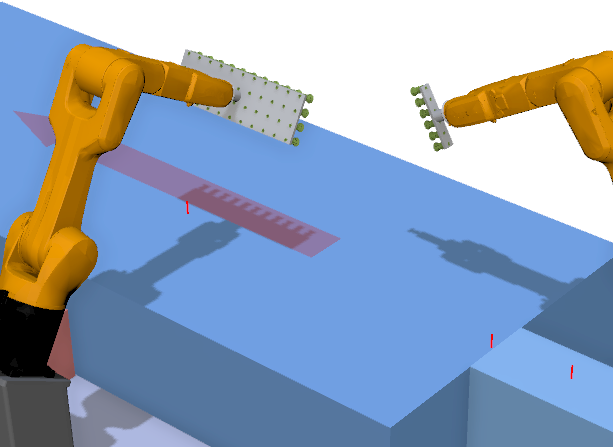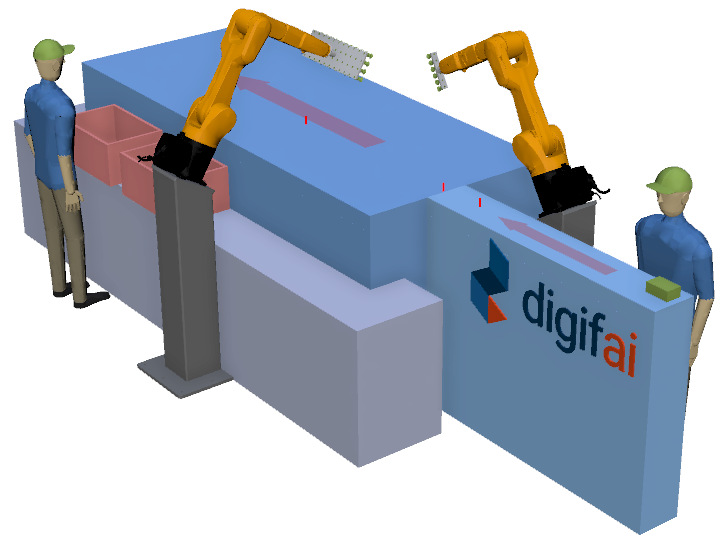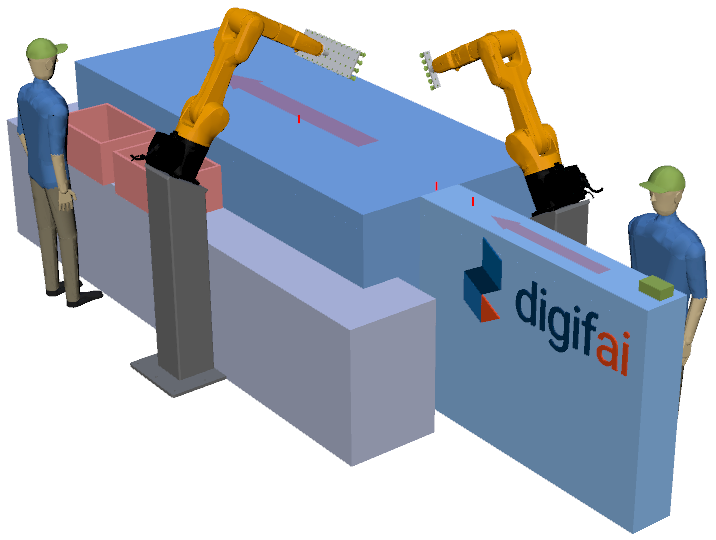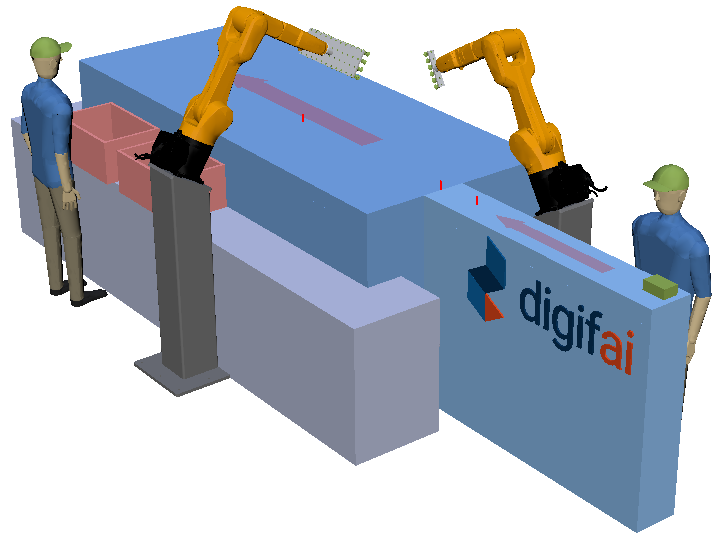Modify Scene Properties
This documentation demonstrates how to use the Scene API. It allows you to manage 3D objects, scene properties and various rendering settings.
Add and remove objects
add(myObject)
You can add supported scene objects using:
twin.scene.add(myObject);
Parameter
myObject: Type:TextLabel2D,HtmlLabel2D, andLabelLine. For more, take a look at CustomLabels
remove(myObject)
You can remove them using:
twin.scene.remove(myObject);
Parameter
myObject: Type:TextLabel2D,HtmlLabel2D, andLabelLine. For more, take a look at CustomLabels
Get object information
getObject3DAsJson(guid)
You can retrieve a scene object by its guid:
let guid = "my-guid";
let obj = twin.scene.getObject3DAsJson(guid);
Parameter
guid: The Guid of the desired Object3D.
Returns
object3DType:Json. The desired Object 3D with the given information as Json.
getObject3D(guid)
You can retrieve a scene object by its guid:
let guid = "my-guid";
let obj = twin.scene.getObject3D(guid);
Parameter
guid: The Guid of the desired Object3D.
Returns
object3DType:Object3D. The desired Object 3D with the given guid.
Selection handling
You can select and deselect objects:
selectObject3D(guid)
This selects a specific object by its guid:
let guid = "my-guid";
twin.scene.selectObject3D(guid);
Parameter
guid: The Guid of the desired Object3D.
deselectObject3D(guid)
This deselects a specific object by its guid:
let guid = "my-guid";
twin.scene.deselectObject3D(guid);
Parameter
guid: The Guid of the desired Object3D.
deselectAllObject3D()
This deselects all object:
twin.scene.deselectAllObject3D();
getGuidsOfSelectedObject3Ds()
To get all selected objects:
let selected = twin.scene.getGuidsOfSelectedObject3Ds();
Returns
selectedType:stringlist. The desired Object3D with the given guid.
Scene background and rendering
setBackgroundColor(color)
You can set the scene background color:
const color = "#000088"
twin.scene.setBackgroundColor(color);
Parameter
color:hex color codeof your desired color.
getBackgroundColor(color)
You can get the current background color:
let color = twin.scene.getBackgroundColor();
Return
color:hex color codeof the current color.
Display quality
This section covers the visual display options that will make your scene appear more vivid and bring more depth. It also covers option that can positively influence the performance of your mirror.
Shadows
Shadows allow your scene to appear more lively and spatial. In return, they need a lot of computing power. Depending on your hardware performance, it is advisable to switch this off. It is necessary that the scene is loaded before enabling the shadows.
enableShadows(enable)
Enable or disable shadows:
window.twin.host.notify = function (topic, payload) {
if (topic === "sceneLoaded") {
window.twin.scene.enableShadows(true);
}
};
Parameter
enable: Type:bool. Enables/disables shadows.
This is a scene with shadows enabled:

This is a scene with shadows disabled:

Scalable Ambient Occlusion
Scalable Ambient Occlusion is a technique that adds soft shadows to corners and edges to make them look more realistic and three-dimensional. Depending on your hardware performance, it is advisable to switch this off.
enableScaleableAmbientOcclusion(enable)
Enable scaleable ambient occlusion:
twin.scene.enableScaleableAmbientOcclusion(enable);
Parameter
enable: Type:bool. Enables/disables Scalable Ambient Occlusion.
This example shows SAO enabled with two cubes: one above the other. You can clearly see, that there are two cubes. One above and one below.

This is the same scene but without SAO. Now it looks just like one cube.

Antialiasing
Antialiasing is a technique that smooths jagged edges in digital images to make them look cleaner and more natural. Depending on your hardware performance, it is advisable to switch this off.
enableAntialiasing(enable)
Enable antialiasing:
twin.scene.enableAntialiasing(enable);
Parameter
enable: Type:bool. Enables/disables Antialiasing.
This is an edge with antialiasing:

This is an edge without antialiasing. You can clearly see the difference, especially when you look at the two people or the robots.

Frame Rate
The frame rate can be adjusted. This could help to reduce system load on limited hardware or to run even more smoothly on better hardware.
You can manually set/get the rendering frame rate:
setFPS(fps)
twin.scene.setFPS(fps);
Parameter
fps: Type:int. Value of the desired frame rate.
getFPS(fps)
let fps = twin.scene.getFPS();
Return
fps: Type:int. Value of the current frame rate.
Get parent hierarchy
getParentGuids(guid)
You can get the full parent chain of a 3D object:
let parents = twin.scene.getParentGuids(guid);
Parameter
guid: Type:string. GUID of the object you want to access.
Return
parents: Type:stringlist with the guids of the parents.
Example
<!DOCTYPE html>
<html lang="en">
<head>
<meta charset="UTF-8" />
<title>Scene API Demo</title>
<script src="./js/twin.min.js"></script>
<style>
html, body {
margin: 0;
padding: 0;
height: 100%;
font-family: sans-serif;
}
#twinMirror {
position: relative;
width: 100%;
height: 100%;
overflow: hidden;
}
#controls {
position: absolute;
top: 10px;
left: 10px;
z-index: 10;
background: rgba(255, 255, 255, 0.9);
padding: 10px;
border-radius: 4px;
}
#controls button,
#controls input[type="text"],
#controls input[type="number"],
#controls input[type="color"] {
display: block;
margin-bottom: 5px;
width: 180px;
font-size: 14px;
}
#controls label {
font-size: 13px;
margin-top: 10px;
display: block;
}
</style>
</head>
<body>
<div id="twinMirror"></div>
<div id="controls">
<label>GUID:</label>
<input type="text" id="guidInput" placeholder="Object GUID">
<button onclick="selectObject()">Select Object</button>
<button onclick="deselectObject()">Deselect Object</button>
<button onclick="deselectAll()">Deselect All</button>
<button onclick="getSelected()">Get Selected GUIDs</button>
<button onclick="getObject3D()">Get Object3D</button>
<button onclick="getParents()">Get Parent Guids</button>
<label>Background Color:</label>
<input type="color" id="bgColorPicker" value="#000088">
<button onclick="setBackgroundColor()">Set Background Color</button>
<button onclick="getBackgroundColor()">Get Background Color</button>
<button onclick="toggleShadows()">Toggle Shadows</button>
<button onclick="toggleSAO()">Toggle SAO</button>
<button onclick="toggleAA()">Toggle Antialiasing</button>
<label>Set FPS:</label>
<input type="number" id="fpsInput" placeholder="e.g. 30">
<button onclick="setFPS()">Set FPS</button>
<button onclick="getFPS()">Get FPS</button>
</div>
<script>
window.twin = new twinLibrary.Twin();
window.twin.start("twinMirror", "http://localhost:3000");
window.twin.host.notify = function (topic, payload) {
if (topic == "objectClicked") {
let clickedObject = JSON.parse(window.twin.scene.getObject3DAsJson(payload.guid));
let name = clickedObject.Name;
let guid = clickedObject.Guid;
console.log(`Clicked object: Name = ${name}, GUID = ${guid}`);
}
};
let state = {
shadows: true,
sao: true,
aa: true,
};
function selectObject() {
const guid = document.getElementById("guidInput").value.trim();
if (guid) twin.scene.selectObject3D(guid);
}
function deselectObject() {
const guid = document.getElementById("guidInput").value.trim();
if (guid) twin.scene.deselectObject3D(guid);
}
function deselectAll() {
twin.scene.deselectAllObject3D();
}
function getSelected() {
const selected = twin.scene.getGuidsOfSelectedObject3Ds();
alert("Selected GUIDs:\n" + selected.join("\n"));
}
function getObject3D() {
const guid = document.getElementById("guidInput").value.trim();
if (guid) {
const obj = twin.scene.getObject3D(guid);
console.log("Object3D:", obj);
alert("Object3D logged to console.");
}
}
function getParents() {
const guid = document.getElementById("guidInput").value.trim();
if (guid) {
const parents = twin.scene.getParentGuids(guid);
alert("Parent GUIDs:\n" + parents.join("\n"));
}
}
function setBackgroundColor() {
const color = document.getElementById("bgColorPicker").value;
twin.scene.setBackgroundColor(color);
}
function getBackgroundColor() {
const color = twin.scene.getBackgroundColor();
alert("Background color is: " + color);
}
function toggleShadows() {
state.shadows = !state.shadows;
twin.scene.enableShadows(state.shadows);
}
function toggleSAO() {
state.sao = !state.sao;
twin.scene.enableScaleableAmbientOcclusion(state.sao);
}
function toggleAA() {
state.aa = !state.aa;
twin.scene.enableAntialiasing(state.aa);
}
function setFPS() {
const fps = parseInt(document.getElementById("fpsInput").value, 10);
if (!isNaN(fps)) twin.scene.setFPS(fps);
}
function getFPS() {
const fps = twin.scene.getFPS();
alert("Current FPS: " + fps);
}
</script>
</body>
</html>